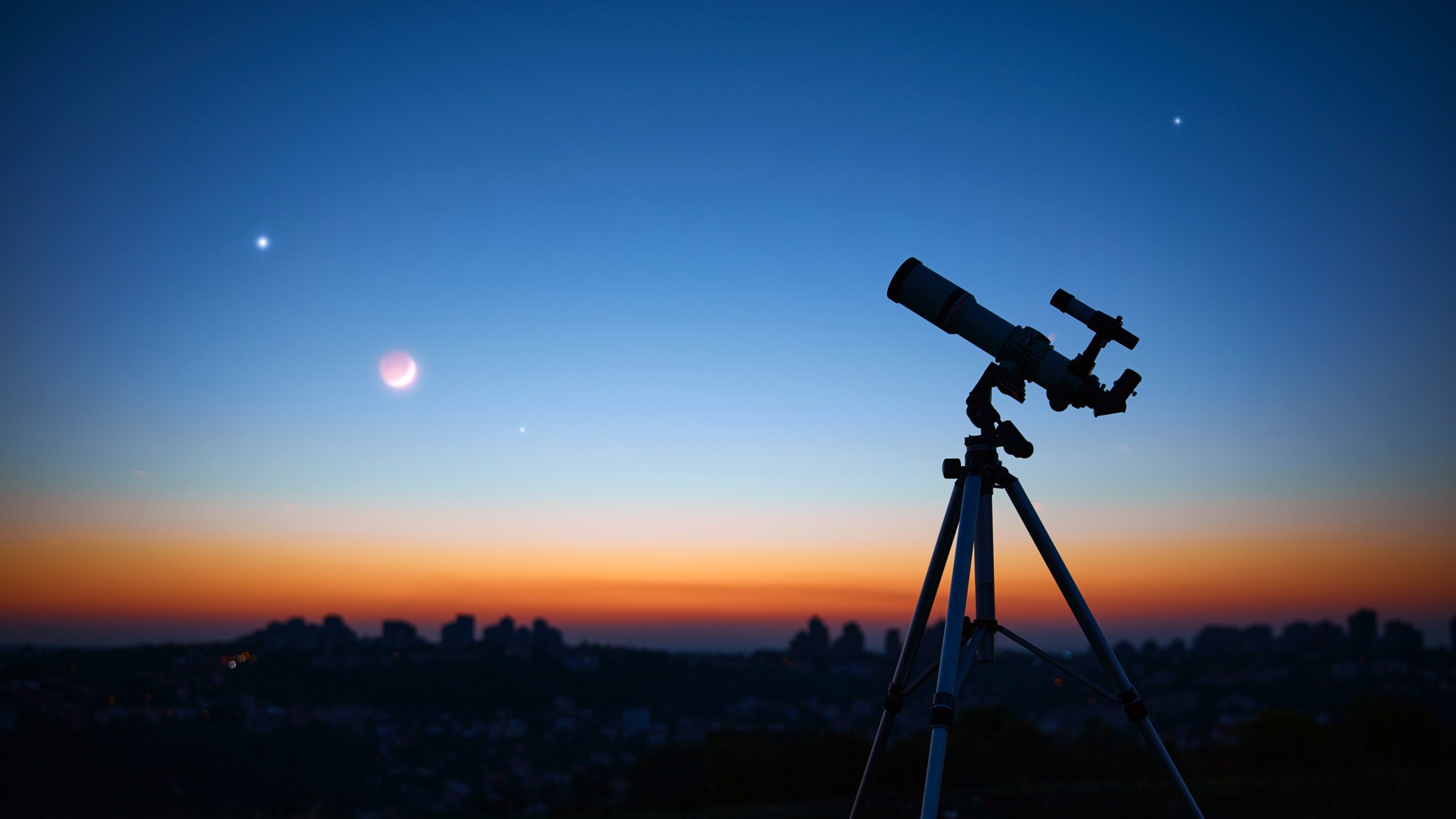5 planets and a crescent moon are about to line up in the night sky. Here's how to watch.
Don't miss views of Mercury, Jupiter, Venus, Uranus, Mars and the moon after sunset from March 23-30.

Starting this week, you can watch five planets in the evening sky as a crescent moon rises higher each night.
From Thursday, March 23 through Thursday, March 30, it will be possible to see Mercury, Jupiter, Venus, Uranus and Mars soon after sunset as a waxing crescent moon appears to make a tour of five planets.
Related: What is the moon phase today?
While Venus and Mars will be very easy to see, you may need to use stargazing binoculars or a telescope to find brightening Mercury and dimming Jupiter, and certainly to see Uranus, which is always just beyond naked-eye visibility. You'll also need a low view of the western horizon, though light pollution makes little difference for planet spotting and moon gazing.
Planetary parade: What will happen
Over the eight nights, Mercury and Jupiter will swap positions, with the former rising above the latter. But to see the switcheroo, you'll have to be outside, looking low to the western horizon immediately after sunset. Meanwhile, the moon will grow from 7% to 68% lit over the week, rising higher each night to visit a different planet.
Throughout the week, Uranus will be above Venus in the west, and beyond it, Mars will shine brightly very high in the sky.
Thursday, March 23: Crescent moon and Venus
On March 23, the view of a slim 7%-lit crescent moon appearing to cup Venus will be jaw-dropping as it hangs just below bright Venus and above Jupiter in the western sky. Mercury will be beneath Jupiter but lost in the sun's glare. Aim some binoculars at the moon, and you’ll see Earthshine, which is sunlight reflected from Earth and back onto the lunar surface, according to NASA.
Sign up for the Live Science daily newsletter now
Get the world’s most fascinating discoveries delivered straight to your inbox.
Friday, March 24: Crescent moon and Uranus
On March 24, a 13%-lit crescent moon will be above Venus and very close to Uranus. Use binoculars to look for Earthshine on the moon; then range to the left to glimpse the seventh planet. Jupiter will have sunk slightly, and Mercury will have risen, though not enough to be easily visible.
Saturday, March 25: Crescent moon and the Pleiades
On March 25, the crescent moon, now 21% lit, will be about a third of the way from Venus to Mars. Point some binoculars just above the northeastern limb of the moon, and you'll see the many bright stars of the Pleiades open cluster.
On Saturday you can also watch live as a skyscraper-sized asteroid zooms between the moon and Earth in a rare, super-close flyby.
Sunday, March 26: Moon and Mars
Now 30% lit, the moon will have moved closer to Mars, while Mercury and Jupiter will be very close to each other low on the western horizon.
Monday, March 27: Jupiter-Mercury conjunction
Tonight sees a conjunction of the solar system's smallest and largest planets, when Mercury and Jupiter appear to get within about 1 degree of each other and will be visible to the naked eye right after sunset, according to Starwalk. Meanwhile, the 39%-lit moon will shine brightly, close to Mars.
Tuesday, March 28: Mercury rising
As a half-lit first-quarter moon hangs beyond Mars, Mercury will be rising. On March 28, it will be above Jupiter and more easily visible to the naked eye.
Wednesday, March 29: Jupiter sinking
As Mercury rises even higher and gets easier to see, Jupiter will be lost in the sun's glare and hard to see. Venus has been rising all week, and now it's getting close to Uranus.
Thursday, March 30: Venus-Uranus conjunction
As Mercury and Jupiter continue to appear to move in opposite directions, bright Venus will shine just 1 degree from Uranus in the week's second planetary conjunction. However, to see blue-green Uranus, you’ll need to use binoculars or a telescope.

Jamie Carter is a freelance journalist and regular Live Science contributor based in Cardiff, U.K. He is the author of A Stargazing Program For Beginners and lectures on astronomy and the natural world. Jamie regularly writes for Space.com, TechRadar.com, Forbes Science, BBC Wildlife magazine and Scientific American, and many others. He edits WhenIsTheNextEclipse.com.









